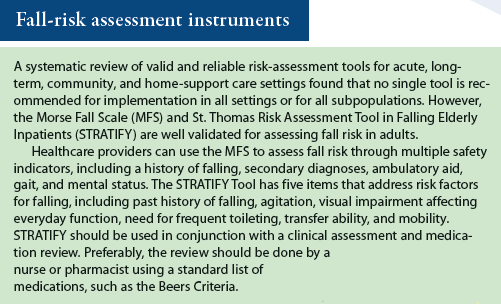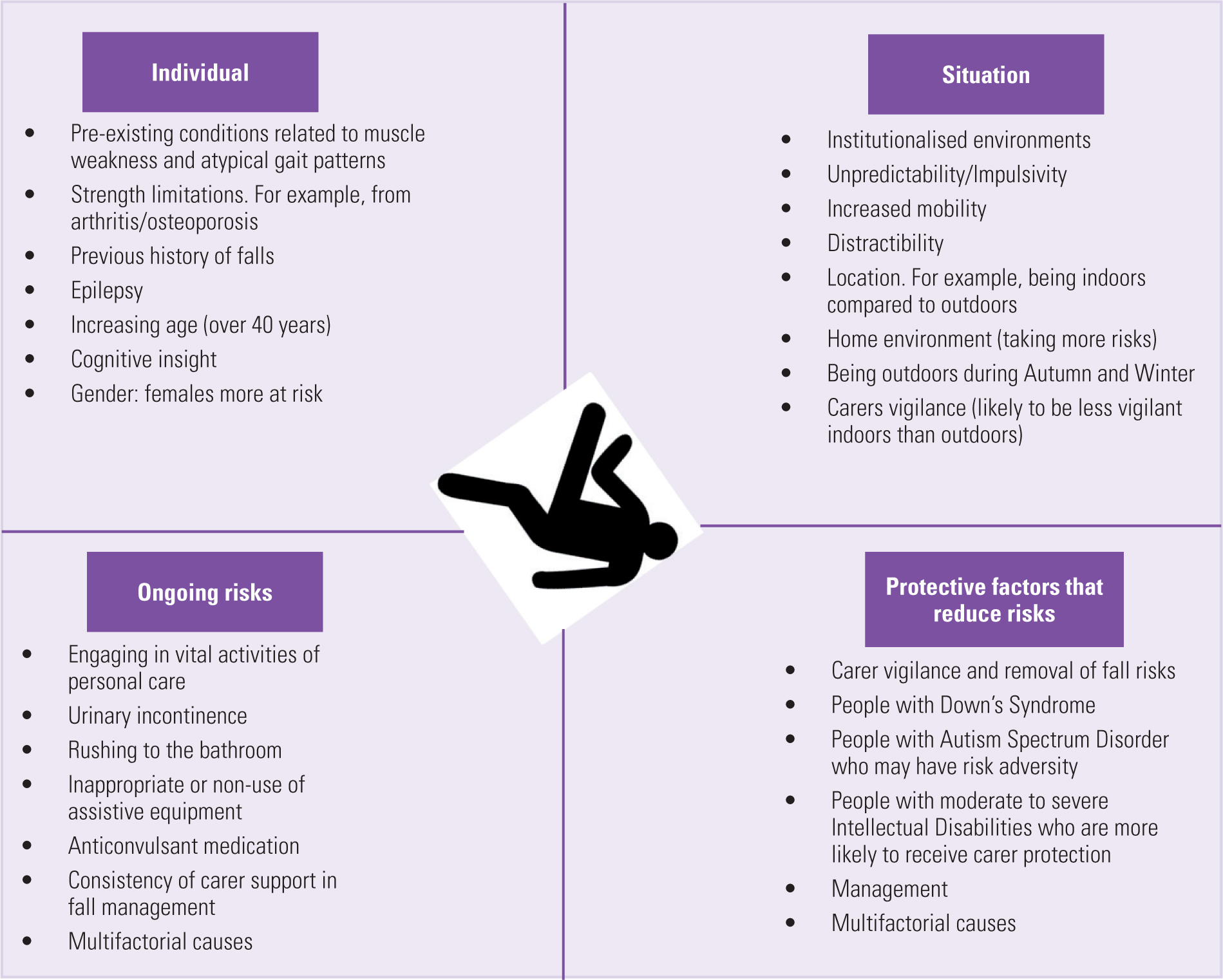The Ultimate Guide To Dementia Fall Risk
Some Of Dementia Fall Risk
Table of ContentsSome Of Dementia Fall RiskHow Dementia Fall Risk can Save You Time, Stress, and Money.Excitement About Dementia Fall RiskSome Known Details About Dementia Fall Risk Things about Dementia Fall Risk
In the area, poor street illumination or vulnerable creeks and garbage dumps might likewise cause crashes. Autumns Danger Evaluation Tool (FRAT) is a 4-item falls-risk testing tool for sub-acute and household treatment. The FRAT has three sections: fall threat status, threat element checklist, and activity plan. A Loss Danger Status consists of data about background of recent drops, medications, emotional and cognitive condition of the client.If the individual ratings on a danger factor, the matching number of points are counted to the client's loss danger rating in the box to the far. If an individual's autumn danger score amounts to 5 or greater, the person is at high danger for drops. If the client ratings just four points or reduced, they are still at some threat of falling, and the nurse needs to use their finest professional assessment to take care of all loss risk elements as part of a holistic care plan.
These conventional techniques, in basic, help establish a safe setting that reduces unintentional falls and marks core preventative measures for all patients. Signs are essential for patients at risk for drops.
10 Easy Facts About Dementia Fall Risk Shown
Wristbands must consist of the patient's last and initial name, date of birth, and NHS number in the UK. Details must be printed/written in black versus a white background. Only red color needs to be made use of to signal special client standing. These suggestions are consistent with current developments in patient recognition (Sevdalis et al., 2009).
Things that are as well far may need the individual to get to out or ambulate unnecessarily and can potentially be a danger or contribute to falls. Assists avoid the individual from going out of bed with no assistance. Registered nurses react to fallers' call lights faster than they do to lights started by non-fallers.
Visual problems can greatly cause drops. Hip pads, when put on correctly, may lower a hip crack when autumn occurs. Maintaining the beds closer to the floor lowers the threat of falls and severe injury. Positioning the cushion on the flooring significantly reduces fall threat in some healthcare setups. Reduced beds are made to lessen the range a person falls after relocating out of bed.
Dementia Fall Risk - Truths
Patients who are high and with weak leg muscular tissues that try to sit on the bed from a standing position are most likely to drop onto the bed due to the fact that it's too reduced for them to lower themselves securely. If a high patient efforts to get up from a reduced bed without support, the individual is most likely to drop back down onto the bed or miss the bed and fall onto the floor.
They're developed to promote prompt rescue, not to avoid drops from bed. Audible alarm systems can likewise advise the patient not to obtain up alone. Making use of alarms can also be an alternative to physical restrictions. Aside from bed alarm systems, increased guidance for high-risk patients likewise might help prevent drops.

Individuals with a shuffling stride increase loss opportunities considerably. To lower autumn danger, footwear should be with a little to no heel, slim soles with slip-resistant walk, and support the ankles. Encourage individual to use nonskid socks to avoid the feet from sliding upon standing. Encourage people to wear suitable, well-fitting shoesnot nonskid socks for ambulation.
Not known Details About Dementia Fall Risk
Patients, particularly older grownups, have decreased aesthetic capacity. Illumination an unfamiliar setting helps boost presence if the patient have to stand up in the visit here evening. In a research, homes with adequate illumination record less falls (Ramulu et al., 2021). Enhancement in lighting at home may reduce autumn rates in older grownups (Dementia Fall Risk). Making use of stride belts by all health treatment service providers can advertise safety and security when assisting patients with transfers from bed to chair.

Sitters work for ensuring a safe and secure, protected, and safe atmosphere. Research studies demonstrated extremely low-certainty evidence that caretakers minimize autumn danger in intense care medical facilities and only moderate-certainty that alternatives like video surveillance can reduce caretaker use without enhancing loss risk, recommending that caretakers are not as helpful as originally believed (Greely et al., 2020).
The Single Strategy To Use For Dementia Fall Risk

Raised physical fitness lowers the threat for drops and limits injury that is sustained when loss takes place. Land and water-based exercise programs might be in a similar way useful on equilibrium and gait and thereby reduce the threat for drops. Water workout might contribute a favorable advantage on balance and stride for females 65 years and older.
Chair Increase Workout is a basic sit-to-stand exercise that helps reinforce the muscle mass in the thighs and buttocks and improves wheelchair and freedom. The objective is to do Chair Rise exercises without making use of hands as the client ends up being stronger. See resources section for a comprehensive direction on just how to perform Chair Rise workout.